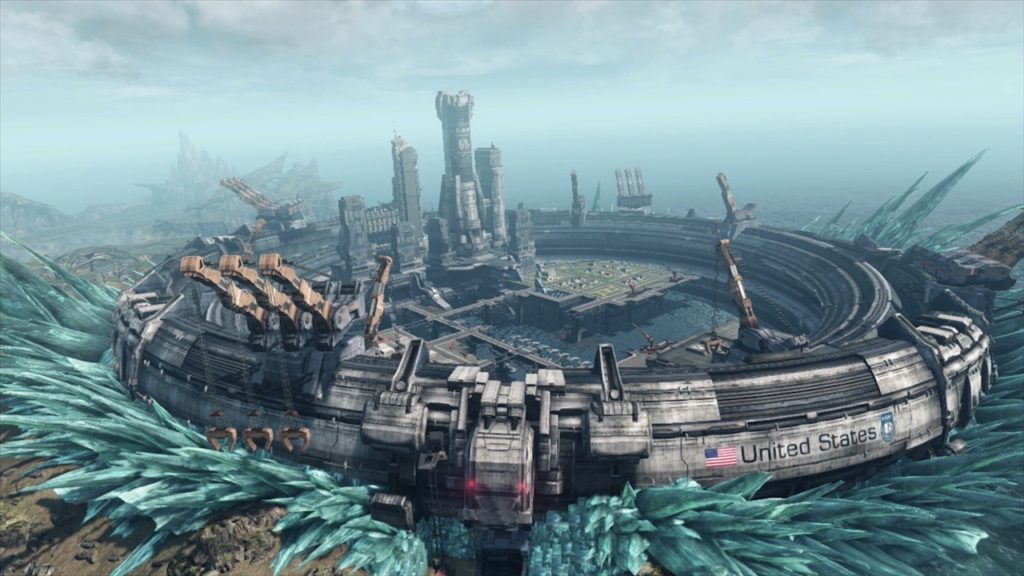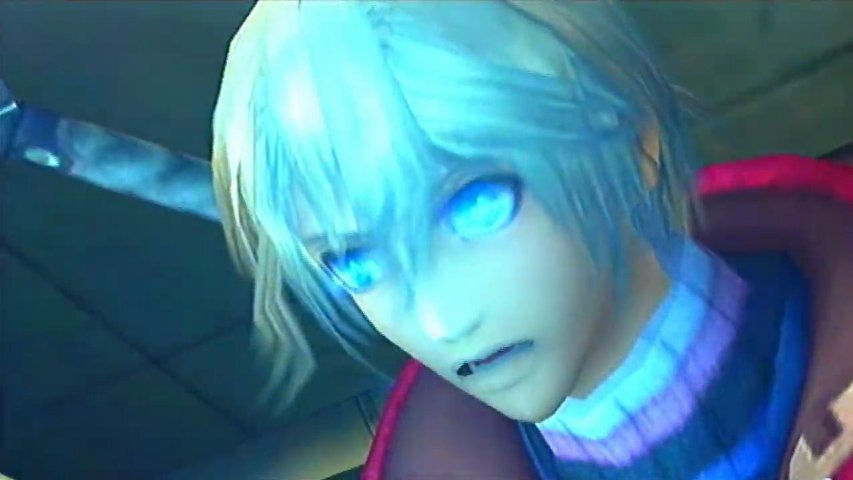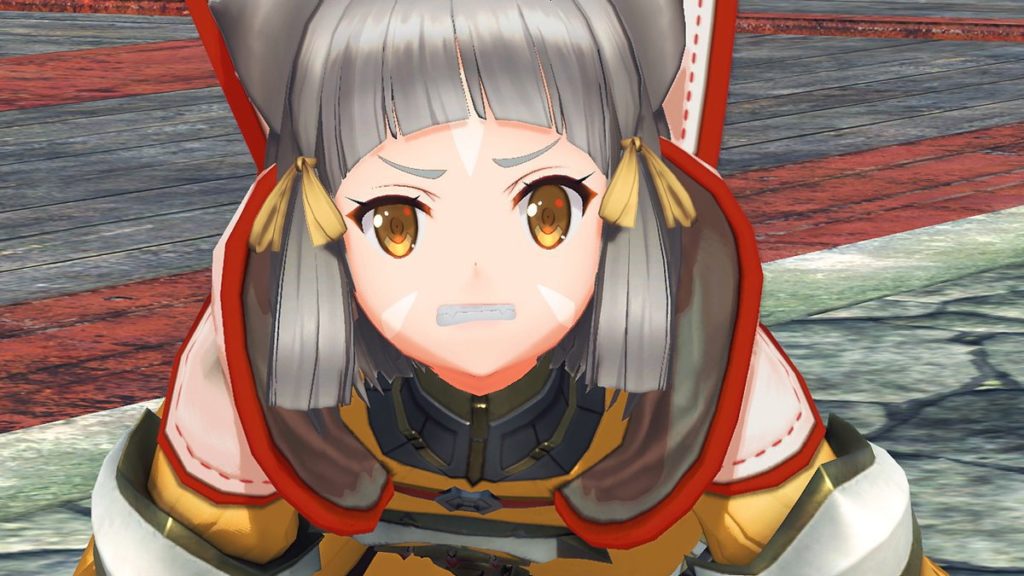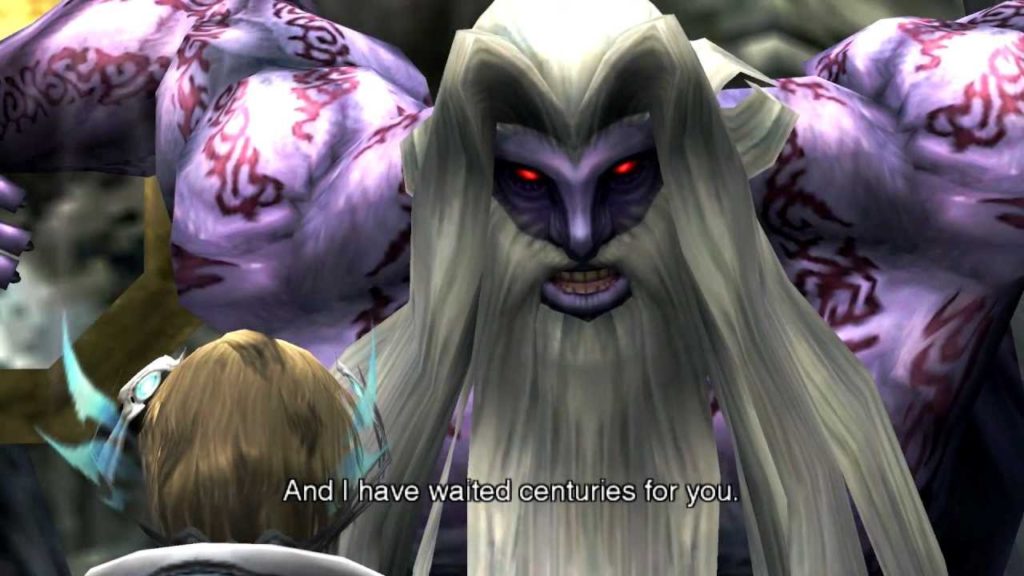I know it’s been some time, but I felt very strongly about this one. I truly wanted to pay tribute to my favorite series of all time, and so, I present to you without further ado, my top ten Xenoblade Chronicles moments. I will be capturing cutscenes or clusters of cutscenes that I feel speak to the specific quality of the series in ways most scenes just can’t do. It’s a long list with a lot of explaining, so I’m just gonna get to it. Note that these moments are ranked across all three games, Xenoblade Chronicles, Xenoblade Chronicles X, and Xenoblade Chronicles 2. Also, literally the biggest spoiler alert you’ve ever seen in your life.
10) Invasion of New LA
 Xenoblade Chronicles X was very different from its predecessor, offering a more linear mission based experience by comparison. The lack of freedom lent itself to a bit of a predictable/formulaic main story. While I realize that the exploration was the big pull of the game (and man, that exploration was incredible) it’s still important that a main story has some twists and turns, and this one was perhaps the best. Really speaking to the quality of the series, the best aspects of a Xenoblade Chronicles story directly change the way the game is played, and turning this game’s hub world of New Los Angeles into a war-torn battleground definitely shifted the landscape of this adventure. From the siren blaring as the Ganglion marched upon the wall, to holding them off at the gates, to battling throughout the commercial district, this experience marks a pivotal turning point for the game. Even the seemingly unshakable presence of Lin is rattled by this attack, and the game never quite recovers from this massive tonal shift. In addition, the sheer fact that this chapter starts off like any other, and is then interrupted by a literal game changing series of events knocks the player off guard in such a way that makes for a much more thrilling experience than any of the previous chapters.
Xenoblade Chronicles X was very different from its predecessor, offering a more linear mission based experience by comparison. The lack of freedom lent itself to a bit of a predictable/formulaic main story. While I realize that the exploration was the big pull of the game (and man, that exploration was incredible) it’s still important that a main story has some twists and turns, and this one was perhaps the best. Really speaking to the quality of the series, the best aspects of a Xenoblade Chronicles story directly change the way the game is played, and turning this game’s hub world of New Los Angeles into a war-torn battleground definitely shifted the landscape of this adventure. From the siren blaring as the Ganglion marched upon the wall, to holding them off at the gates, to battling throughout the commercial district, this experience marks a pivotal turning point for the game. Even the seemingly unshakable presence of Lin is rattled by this attack, and the game never quite recovers from this massive tonal shift. In addition, the sheer fact that this chapter starts off like any other, and is then interrupted by a literal game changing series of events knocks the player off guard in such a way that makes for a much more thrilling experience than any of the previous chapters.
9) Lao’s Betrayal
If you’d been paying attention since the start of the game, Lao turning traitor was probably not a big surprise for you. He’d been behaving suspiciously the entire game, so it definitely seemed like the more obvious direction. From the perspective of actual plot relevance, other plot twists might deserve this spot, such as the reveal of mimeosome bodies or the big reveal about the lifehold. But this one is different in its entirety. Lao’s developed relationship with Lin, who obviously draws a strong parallel to his own daughter, creates a genuine sense of loss for a character that we spend a lot of time with. There’s this overwhelming feeling that Lin has been truly betrayed. Lao’s convictions feel strong in delivery, and the score truly compliments the tragic undertones of his story. While I found Lao’s betrayal obvious, I admittedly didn’t expect it to be such a crucial point in the endgame. Its predictability, combined with the avatar character’s bland presence are probably the key moments that prevent this sequence from being higher on the list. But all in all, this is the second best betrayal in the series. *Epic Foreshadowing*
8) Confronting Dickson
Xenoblade Chronicles did something that few narratives ever manage to do. It shows a protagonist in an out of character moment that disrupts their arc completely, but feels incredibly natural while doing so. Shulk alludes to wanting to kill someone a collective three times throughout the duration of the game. Two of those times, he’s talking about Metal Face. Yet when finally confronted with the opportunity to kill Metal Face, Shulk decides not to. As he does with Egil. As he does with pretty much every major foe he encounters throughout his journey, except a Telethia or two. This all changes when he has his final confrontation with Dickson. Dickson, who has betrayed his brethren to serve Zanza/The Bionis. Dickson, who adopted Shulk and raised him for the sole purpose of destroying the world. Who saw to the death of Meyneth, whose entire character can be summed up as “pretty awful man.” Shulk has had it. He’s run out of patience, and he knows that if he doesn’t bring his all to a fight with Dickson, that he’s going to lose everything. So he says this insane line. “Dickson, if you’re so determined to stop us, then we will kill you.” In that moment, Shulk shows a degree of resolve that speaks to what truly makes him a good leader. Everyone stands by him because of his willingness to self-sacrifice. He’s standing before his adopted father, preparing to abandon all of his morals, everything that binds him to his soul. He’s doing this because he knows Zanza is not going to wait around while he lives in his feelings. Shulk knows that if he doesn’t kill Dickson, everyone he loves is going to die. This moment screams of conclusion, and to be completely honest, even if Zanza was nowhere to be seen, this felt like a suitable ending for the game all on its own.
7) Best Guests (Shulk’s Return)
Another moment for Shulk. What can I say? The kid has guts. Man, if this scene doesn’t speak to that. Trying to find even the slightest glimmer of hope in this moment is as close to impossible as it gets. Zanza has won, Meyneth and Egil are dead, and Shulk isn’t moving. Not that it would really matter if he were, because the Monado is now in the possession of the enemy. Nobody is able to defeat Dickson and his Telethia, and with the Monado in Fiora’s chest gone, her life is about to be cut short as well. Everything is as dire as can be, and at this point, there’s seemingly no turnaround. We get to witness Shulk struggle with this from the depths of his consciousness, and then, in the most crucial moment, he returns, easily executing two very large telethia with just two quick swings of his sword. His sword. A replica of the Monado. A power that no longer belongs to the gods, the homs, or the Mechon, but Shulk alone. Then this character, who throughout the entire game has been calm, collected, focused, breaks for just a second. He looks upon Dickson as he flies away and they have this exchange of lines. “We’ll be waiting on our best behavior.” “And we will be the best guests you’ve ever had.” Shulk says that unblinking and unmoving. His posture like a stone. It’s powerful and effective. There’s something about seeing our main character speak with confidence for the first time since these events occurred that really speaks to a larger idea here. We’re about to see a big conclusion, and Shulk couldn’t be more confident.
find even the slightest glimmer of hope in this moment is as close to impossible as it gets. Zanza has won, Meyneth and Egil are dead, and Shulk isn’t moving. Not that it would really matter if he were, because the Monado is now in the possession of the enemy. Nobody is able to defeat Dickson and his Telethia, and with the Monado in Fiora’s chest gone, her life is about to be cut short as well. Everything is as dire as can be, and at this point, there’s seemingly no turnaround. We get to witness Shulk struggle with this from the depths of his consciousness, and then, in the most crucial moment, he returns, easily executing two very large telethia with just two quick swings of his sword. His sword. A replica of the Monado. A power that no longer belongs to the gods, the homs, or the Mechon, but Shulk alone. Then this character, who throughout the entire game has been calm, collected, focused, breaks for just a second. He looks upon Dickson as he flies away and they have this exchange of lines. “We’ll be waiting on our best behavior.” “And we will be the best guests you’ve ever had.” Shulk says that unblinking and unmoving. His posture like a stone. It’s powerful and effective. There’s something about seeing our main character speak with confidence for the first time since these events occurred that really speaks to a larger idea here. We’re about to see a big conclusion, and Shulk couldn’t be more confident.
6) That Night on the Beach
This moment has the best placement of anything in the entire game. The intensity of the first confrontation with Egil, followed by the mystery of falling off of a titan (which previously had been established as a one-way ticket to certain death) left our heroes a little rattled. Split into three different groups, we got to see an incredible side of this journey, and one that consistently left me in tears throughout. First, a long awaited reunion between Shulk and Fiora. This marks an incredible turningpoint for the game as well. Shulk and Fiora finally have a candid conversation about the entire journey. But more importantly, it’s all over. Metal Face has been defeated and Fiora is rescued. This is when our adventure stops being a revenge quest, and becomes a story of heroes. A transition very well illustrated by our main heroes revealing quite a bit of inner turmoil. Reyn is feeling useless in the face of Shulk’s newfound strength, Sharla is still no closer to finding Gadolt, Dunban feels as though he failed to protect Fiora. These separate plots provide us with an opportunity to watch the team grow together. All of it culminates in a truly heartfelt reunion between the likes of Fiora and her brother. Dunban’s look of approval, which has a much stronger much louder meaning in the context of his previous conversation with Riki lends itself to a much greater form of symbolism. Shulk, Reyn, and Fiora have truly come of age. But it also plays as a catalyst to an incredible shift in the narrative. Metal Face is dead and Fiora has been rescued. The question rings louder than ever. The mission has been won, so are we satisfied?
5) Lao’s Redemption
I’ll probably catch some shade for choosing this “villain reformed” moment over the other big one, but I’ll admit it flat out. I’m not a very big fan of Egil. I find the character to be very interesting, he has a lot of parallels to Shulk and I think that’s really cool, but he just wasn’t as entertaining on screen for me as characters like Lao, or Malos, or (my personal favorite) Dickson. While Lao’s redemption had the same qualities of predictability as a large portion of the game’s narrative, it doesn’t stop the moment from being just as impressive. It’s not as though Lao jumps in with this whole “I’m a noble hero now” approach. He’s still honest with himself about what he’s done and the type of person it makes him. It manages to create a huge moment of resolution for a lot of the game’s cast. In fact, the only character who doesn’t feel like they’re properly resonating with that moment is the avatar character (perhaps the biggest issue with the game’s narrative altogether). To see Lin moved to tears by her friend’s noble sacrifice, and having to come to grips with the reality that this path will end in death was probably one of the best moments in the game. I’ll be the first to admit that this is where the story starts to go off the rails, but Xenoblade Chronicles X was a game about exploration, developing relationships, and fighting incredible battles. The characters still stand as good examples of consistent quality writing, and the battles at the very least look pretty cool.
4) Burdened No Longer

I know, we’re very far up for Xenoblade 2 to be getting its first crack at the list. It’s not that the game didn’t have its moments, it’s just that the ones that really hit hard came close to the end of the experience. Xenoblade Chronicles 2 was a game largely about the theme of reflection. At least, based on my interpretation. You had seemingly immortal characters like Pyra, Mythra, Jin, Malos, all had this obsession with death. The power of Aegis’ and flesh eaters were a consistent pain point throughout the story. Bearing this in mind, it should come as no surprise that Nia, arguably the game’s best character, spends a lot of the adventure hiding the fact that she is really a Flesh Eater. A blade that has been fused with human DNA in order to gain greater power at the cost of immortality.
The moment when Nia reveals herself as a blade could have been tragic or sad, but instead it’s a truly beautiful sequence. It follows one of the most well choreographed fight sequences in the entire game, where seeing Rex and company in danger Nia has a beautifully tragic trip down memory lane. Every major death or injury since the start of the game flashes through her mind, and she questions the moments in which she could have made a difference had she not been afraid of what she was. It was intense, and then culminates in her revealing her true power.
Nia being a blade didn’t come out of nowhere, the game all but says it outright. You first see signs of this during your fight with Torna in Uraya, where she clutches her chest in slight pain as Ahkos reverses the ether waves of blades. Then again in the hot springs and when she saves the emperor in Indol. And this moment, where we finally see her, combined with the instrumental version of Drifting Soul and the equal parts surprise and support of Zeke and Morag, Nia makes the leap from my favorite in Xenoblade 2 to easily hitting my top three characters in the series. Then she goes to Rex and says “I love you” which in all honesty, I would have preferred if it were meant in the most platonic way possible. They’re just kids, and their ability to make each other feel more confident and proud of themselves in a “best friends” sort of way overall would have made for better characterization in my opinion. In fact, that’s the main reason why this spot isn’t higher on the list. Which isn’t to say there aren’t more big contenders to come, because this next one is a real doozy.
3) Dickson’s Betrayal
Of course this one was on the list, are you serious? I can very confidently say that this was the most well-foreshadowed, well-executed, powerful reveal I have ever seen in any game ever. No, that’s not hyperbole. I’m not being dramatic or overselling. I mean it. From the time the game starts, the Bionis is the most aggressive figure. Shulk admits to having a voice in his head telling him to kill every mechon.
Zanza and Meyneth have an argument at Prison Island. Dickson admits to feeling guilty about betraying the team. Alvis, Lorithia, Dickson. Everything has been building so aggressively to reach this moment. “The moment of Lord Zanza’s return!” It feels earned, and while certain aspects of it may not come as a surprise, others definitely do. Zanza’s soul has been hiding in the Monado. The visions that Shulk has had have all been for the express purpose of administering the return of the game’s most powerful bad guy. All of this, and we’re getting this exposition dump from Zanza’s disciple.
Dickson, who for the whole game has been at best a completely non-malicious force. The game opens with him protecting the Homs from the Mechon. But there’s no time to process any one detail of Dickson’s betrayal. Not for a long while at least. You have the moment he turns, then Zanza awakening, Shulk being “dead” and Egil turning good. The world is shaking, High Entia are SCREAMING in Alcamoth. Then Meyneth and Fiora start flying through the air and launching a full assault on Zanza. Two Monados do battle and create the most epic grandiose exchange we’ve seen yet. In a game where despite the world being at stake, everything felt as though it was pretty grounded. But this sequence LITERALLY takes to the skies, in a way that while truly as anime as can be, doesn’t make it any less gripping. At the center of all of this is Dickson. Dickson, who has the most aggressively disrespectful taunting dialogue we’ve seen so far. Dickson, who admits that he set a lot of the game in motion. Dickson. Xenoblade Chronicles’ best villain.
2) Locked Out of Aion
Xenoblade Chronicles 2 is a strange beast. I think we all know that. Its name is considered more of a reference to the fact that it is a narrative driven experience. Less to do with it being a direct sequel, which we are led to believe is simply not the case. That’s perhaps the key factor that puts this moment so close to the top. There’s a moment where a purple symbol appears on Malos’ sword, and you best believe I shrieked. Then the dude whips out a bunch of Monado arts in his boss fight, and if the fight itself wasn’t so infuriating, I would have been losing it even more. So you could imagine then, why watching the opening of the game’s final chapter sent me into a screaming frenzy.
This weird space station, this lab. Then someone says “we’re locked out by Professor Klaus” and I lost it. Then we get a beat for beat recreation of the moment in which Klaus, better known as Zanza, destroys his universe and creates a new one in its place. But to find that the world of Alrest that we’ve spent the entire game in is that universe was just incredible. That in the skies of his own world, Klaus created yet another plane of existence separate from the one we came to know in the original game. Also, the glimpse of Klaus as a sympathetic character really adds new layers to what we know of Zanza in the first game. It brings an epic story full circle and proves that the events of the first game directly influence the events of the second one. Also, everyone believes Alvis to be the third Aegis. I hope this information gets resolved when the story DLC launches this October. Still, kudos to Xenoblade Chronicles 2 for taking the first game’s most underdeveloped character and giving him a level of depth that he desperately needed. Truthfully I think there’s only one moment that speaks to the identity of this series more than this reveal.
1) Prison Island
Yes, I mean the first time. The big turning point for the first game where the basic revenge plot is turned on its head. Where the game starts screaming its ethical questions from the mountaintops. The moment where Shulk and company arrive on Prison Island and do battle with Metal Face. The scene starts with the introduction of Zanza. In this sequence he is in the body of Arglas, the giant, who is unlike anything else we’ve seen in this game. The High Entia bare a pretty striking resemblance to Homs give or take a couple of weird head-wings. Even the Nopon, while very different in appearance, are so naturally built into every environment of the game that by the time you reach Frontier Village, they make a lot of sense artistically. But Zanza/Arglas the giant is weird. He looks almost disturbing comparatively speaking. Then he is the first person of the game to really speak to the fight between the Bionis and Mechonis. As a witness of the grand battle (and as we later find out a participant) Zanza offers new perspective into the scale of this journey. Before this can go too far, we get an

attack from Metal Face who essentially destroys the giant body. This makes sense, as Egil, who leads the mechon, is doing all of this for the express purpose of destroying Zanza. It’s truly some great insight into the game’s most contentious conflict. But even this fails to take the game away from its central focus. In the end Xenoblade is a series about connections. Primarily those of people like Shulk and Rex, who despite legendary weapons and magic powers will never amount to the warriors they need to be without the bonds at their sides. So seeing as the most crucial bond of Shulk’s life is brought back into the game in such a plot-relevant way is a major risk. Bringing a character back to life sometimes significantly undermines the sense of loss you felt watching them die. But this is the opportunity for the game to start wrestling with some very important topics. As people, do the Mechon deserve to be spared? I mean, even as Zanza increases the Monado’s power, the symbol that appears translates directly to “person.” It’s giving Shulk the ability to pass judgment and execute other Homs. But his world is rocked when he realizes that the Face Mechon have Homs in them. Particularly that Face Nemesis, an entirely new Mechon is inhabited by none other than Fiora. This plot twist works to set up the parallels between Shulk and Egil early on. It allows us insight into Zanza’s influence. It provides a compelling new goal to rescue Fiora. It executes all of this with a great score, a fantastic performance by Adam Howden, and a wonderful cliffhanger moment that truly embodies everything that this wonderful series stands for.
Yeah this was a post and a half I know. But it’s something I’m passionate about. Xenoblade Chronicles is my favorite game of all time, and it’s really cool to see its themes executed so thoroughly across a three game series. Thank you all for reading and come back soon for more from the GAME ROOM!!!